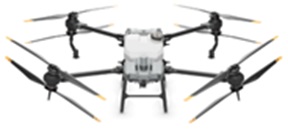- 6924 Columbus Street, New Vienna, IA 52065
- 563-543-2789





Banding Phosphorus Improves Efficiency
Growers are looking for ways to trim fertilizer costs - one way is to band phosphorus containing fertilizers like GoldStart 6-24-6 liquid starter either in or very close to the seed furrow. Banding is a much more efficient way to apply P as opposed to broadcasting on the soil surface. Phosphorus, along with nitrogen and potassium are the 3 primary nutrients used in large quantities by crops. Unlike nitrogen and potassium, phosphorus is almost entirely non-mobile. It doesn’t move through the root system with water. Root growth is required to intercept the phosphorus. When a crop is small there is a very limited root system that can intercept nutrients. This is especially a problem in cold soils. Growers are planting corn a little earlier every year to maximize use of the growing season. Early planting into cold soils slows root growth and the uptake of nutrients. Banding GoldStart 6-24-6 into the corn seed furrow concentrates the nutrients where the new root system is growing. The developing root system can easily absorb these nutrients, even in cold soil temperatures. Banding is important for root absorption of phosphorus. Roots need to “bump into” the P for rapid uptake. In addition, banding limits P fixation with the soil so more phosphorus remains available for plant use. During the growing season roots explore only about 2% of the soil volume. This makes it doubly important to place non-mobile nutrients like P where it will be intercepted by the roots. Depending on soil type and location, banding P can be anywhere from 2-9 times more efficient than broadcasting. Broadcasting a non-mobile nutrient like phosphorus places it out of reach of a developing root system. And it increases the chances that the P will be “fixed” before it can be found by the root system. Regardless of the type of fertilizer program you are following, at least part of the nutrients, especially phosphorus, should be banded close to or in the seed furrow.
Written by: Dennis A Zabel,
PureGrade Technical Support
Posted on Decembr 1, 2015
Click here to send us your comments

We all know how crucial it is to have starter infurrow during corn’s VE stage of growth, or germination and emergence. The final size of leaves, ears and other parts depends on having an adequate supply of nutrients when the radicle and seminal roots begin growth before emergence. Let’s move out a couple more weeks and see why a banded supply of fertilizer in amongst the seminal roots continues to be important to final yields.
Lots of exciting things begin to happen, at least from the corn plant’s perspective, during the first 4 weeks of life. It hasn’t reached adolescence, yet. It has to transition from the seminal root system to the permanent or nodule root system that will function throughout the rest of the plant’s life.
Tassel formation is initiated and the uppermost harvestable (final ear) is initiated. Usually, 8 to 10 identifiable ear shoots will develop, but it is generally the uppermost one that becomes the ear that is harvested.
Kernel row number determination begins at about stage V5 and may be completed by stage V8 or about 4 weeks after emergence. Row number is largely determined by genetics, but severe stress before stage V8 can change that. In contrast, the number of kernels per row is determined later and depends a great deal on environmental factors.
Many stresses during the first few weeks of life can impact yield. We can control fertility, weeds, insects and provide moisture if irrigation is available. We can control excessive moisture to some degree by maintaining drainage systems. Often, it is temperature that places the greatest stress on crop growth. Root growth is slowed and fewer nutrients are absorbed. This can happen when either excessively high or low temperatures occur over extended periods. Positioning a band of PureGrade nutrients in the root zone helps overcome slow growth due to temperature extremes.
PureGrade fertilizers placed in a band in or near the row during planting is the best way to prevent early nutrient stresses on corn and other crops. Because of the proximity of the PureGrade to the root system, nutrients are quickly found and absorbed. The early assimilation of nutrients produces faster growth regardless of soil temperatures. Nutrients like phosphorus and potassium are especially needed during the time that soils remain cold.
Many growers add a foliar application of PureGrade plant food during the early growth period to increase the nutrient levels in the plant and stimulate growth. In addition to the starter application, foliar fertilizer helps keep the plant strong to resist environmental stresses.
Drier Grain
In addition to higher yields, another big advantage of using PureGrade fertilizer with high phosphorus content is the likelihood of drier grain at harvest or being able to start harvest a few days sooner. It’s common to have 1 to 2% drier grain and sometimes more due to starter phosphorus. The savings in drying expense can help pay for the PureGrade application. Another way to look at it is that harvest can start 3 or 4 days earlier. That might be just enough to get everything done before the snow comes. Savings on drying costs can pay up to about half of the cost of a typical PureGrade Liquid Fertilizer application depending on fuel costs.
Written by: Dennis A Zabel,
PureGrade Technical Support
Posted by Andy Willenborg on March 11, 2015
Click here to send us your comments

SPECIAL: 10% OFF Early Order Discount Program through December 31st on all Enduraplas vertical and horizontal poly tanks. SAVE MORE with Truckload Purchase of Nutra-Flo starter fertilizer purchase. Call Andy at 563-543-2789 to reserve your poly tank & spring fertilizer needs today!
Posted by Andy Willenborg on December 4, 2013